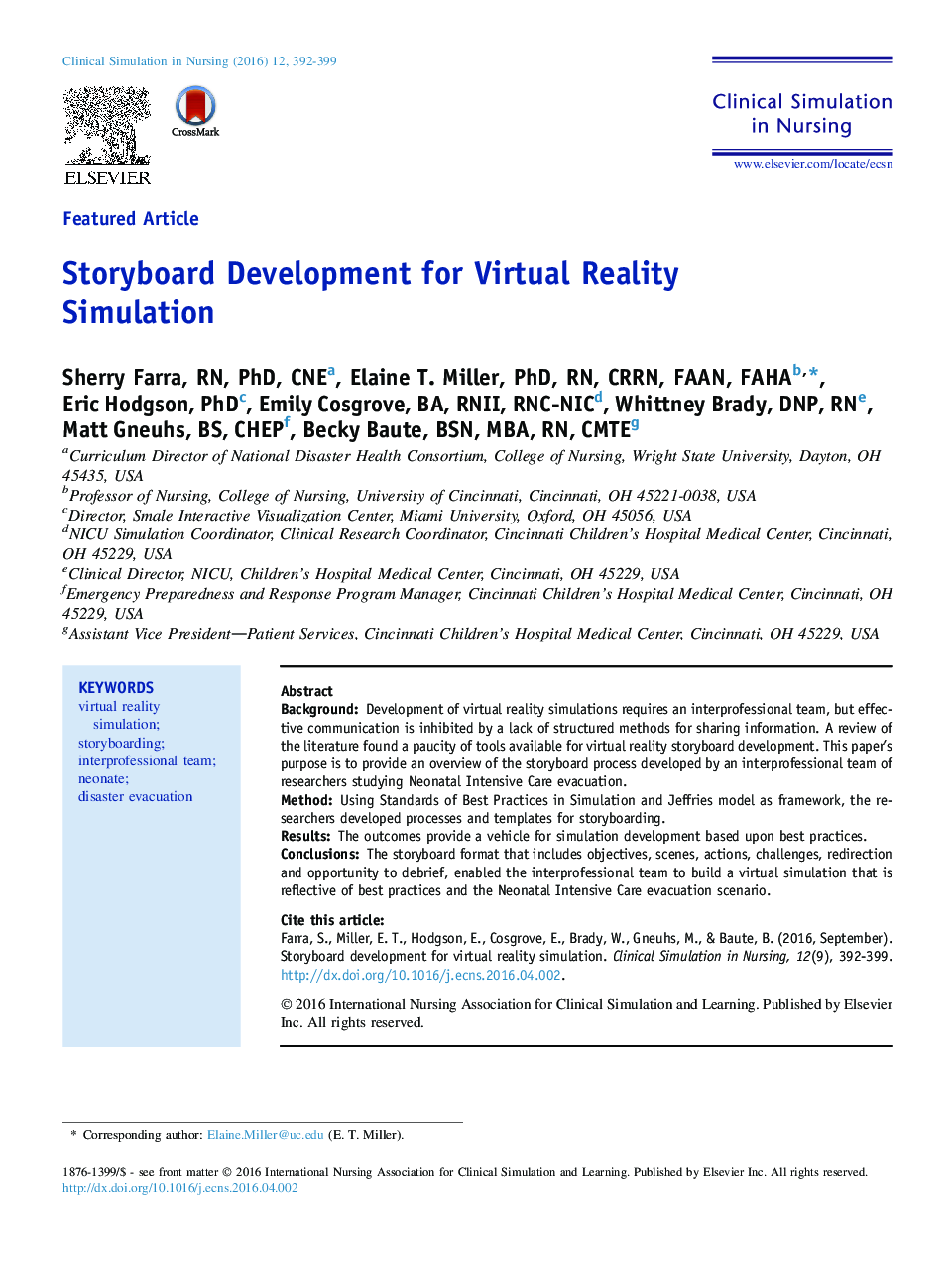| Article ID | Journal | Published Year | Pages | File Type |
|---|---|---|---|---|
| 2646878 | Clinical Simulation in Nursing | 2016 | 8 Pages |
•Storyboard development of virtual reality simulation requires an interprofessional team collaboration for hospital-based education.•Embedding challenges into the storyboard facilitates participant learning.•Redirection or reflection within the storyboard is pivotal to achieve the simulation learning objectives.•After development of the initial storyboard having all team members review the content along with experts improved the ultimate product.•Pilot testing of the resultant virtual reality simulation permitted additional refinement.
BackgroundDevelopment of virtual reality simulations requires an interprofessional team, but effective communication is inhibited by a lack of structured methods for sharing information. A review of the literature found a paucity of tools available for virtual reality storyboard development. This paper’s purpose is to provide an overview of the storyboard process developed by an interprofessional team of researchers studying Neonatal Intensive Care evacuation.MethodUsing Standards of Best Practices in Simulation and Jeffries model as framework, the researchers developed processes and templates for storyboarding.ResultsThe outcomes provide a vehicle for simulation development based upon best practices.ConclusionsThe storyboard format that includes objectives, scenes, actions, challenges, redirection and opportunity to debrief, enabled the interprofessional team to build a virtual simulation that is reflective of best practices and the Neonatal Intensive Care evacuation scenario.
